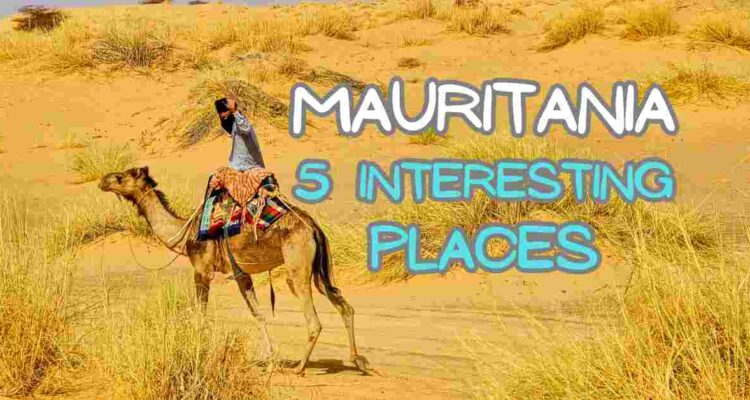Mauritania, a vast blend of ochre sands and captivating cultures, often sparks curiosity but remains relatively unexplored. This journey took us beyond the iconic Sahara Desert dunes, delving into the historical and cultural gems scattered across the Mauritanian landscape. Nouakchott, the bustling and congested capital, was merely our jumping off point. Our true adventure began as we headed north towards Mauritania’s ancient gems: Chinguetti, Ouadane, Richat Structure and Terjit.
These UNESCO towns date back to 200 BC. However, most of them started to be built between the 8th and 12th centuries. They thrived as both trading posts and religious centers for caravans traveling across the Sahara Desert. Over time, they became hubs of Islamic culture, and their unique urban design has remained largely unchanged for centuries.
Imagine narrow streets lined with houses clustered around courtyards – a traditional layout reflecting the nomadic lifestyle of the western Sahara. Each town centers around a mosque, easily identified by its distinctive square minaret. These towns offer a glimpse into a bygone era and a way of life still practiced by many in the region.
Chinguetti
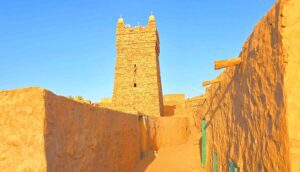
Chinguetti, a UNESCO treasure, is renowned for its rich intellectual heritage. Nicknamed the “Seventh Holy City of Islam,” this was once a major center for Islamic learning. Perched on the edge of the Sahara for over 1,200 years, this ancient town was founded in the 8th century.
This red-stoned oasis served as a rest stop for pilgrims journeying to Mecca. Over time, it transformed into a major hub for learning, attracting scholars who left behind a wealth of religious texts, scientific studies, and historical documents. At its peak, this town boasted 30 libraries housing these invaluable manuscripts. Today, only five libraries remain, with dedicated caretakers safeguarding over 1,000 ancient Qurans.
However, the expanding Sahara Desert is swallowing up the land, encroaching on Chinguetti’s buildings. Climate change has also brought unpredictable flash floods, further jeopardizing the future of this historic city and its precious collection of Islamic treasures.
Where to stay and eat in Chinguetti: Auberge Eden Chez Mahmoud Ould Beija. Lovely basic, yet air conditioned room with a private bathroom. The food is delicious in this inn as well.
Ouadane

Ouadane, another UNESCO World Heritage Site, is an open-air museum whispering tales of a bygone era. Once a prominent center for Islamic scholarship and trade, this ancient city boasts impressive ksar architecture, with towering mudbrick houses adorned with intricate geometric patterns. Wander through the narrow alleyways, marveling at the traditional craftsmanship, and get a glimpse into the lives of the local people.
Where to stay and eat in Ouadane: Auberge Vasque Chez Zaida. Lovely basic, yet air conditioned room with a private bathroom. Again, the food here was wonderful.
PRO TIP
On your way back to Atar and later the capital make sure to stop at a couple of interesting spots:
- Pinturas Rupestres de Amogjar– these are ancient paintings of animals and people inside a cave set in a rocky hill.
- Fort Saganne – this is a fort that was built as a set for a French film of the same name. The movie was filmed in 1984. One can see the fort from the cave art location. However, our guide drove us right to the fort and it was quite interesting to look around.
Richat Structure – “Eye of the Sahara”
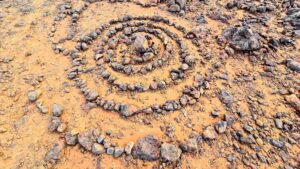
Deep within the western Sahara Desert lies a geological marvel that has captivated explorers and scientists for centuries. Nicknamed the “Eye of the Sahara,” the Richat Structure is a massive, eye-shaped formation that dominates the landscape. Located on the Adrar Plateau in Mauritania, this natural wonder stretches an impressive 50 kilometers (31 miles) in diameter, making it visible even from space. Locals know it by its Arabic name, “Guelb er Richât,” which translates to “the eye of Richat.”
The Richat Structure’s most striking feature is its resemblance to a giant bullseye. With its concentric rings and circular ridges, it’s no wonder that early theories were outlandish. Some even believed it to be the lost city of Atlantis! However, science eventually debunked these ideas. While some experts initially thought it might be a massive impact crater, further studies revealed a more complex origin. The Richat Structure is the result of terrestrial processes, meaning it formed through natural forces right here on Earth.
Ouadane is the closest town to the Richat Sturcture – the “Eye of the Sahara”. This is a 3-4 hour round-trip.
Terjit
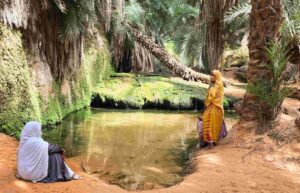
Terjit is a proper Oasis, in the middle of the endless desert. To see such lush palm tree greenery emerging from the sand is quite stunning. Located 45 km south of Atar, this Oasis is found in a gorge on the western edge of the Adrar plateau. The palm grove stretches a few hundred meters alongside a stream which emerges from a spring.
For a small fee one can go swimming in Terjit’s naturally formed pools. Just walking in from the heat of the Sahara into this Oasis is such a breath of fresh and cooling air! Although, I did not feel comfortable swimming (as all the girls and women were dressed in their full nicab outfits), Rob did go for a swim. Our guide said, that I could have swam if I wanted to.
Where to stay and eat in Terjit: L’Auberge Caravane du Desert. These are very basic accommodations, but the best in this town. The hut does not have air conditioning or fans. Therefore, due to the heat we ended up dragging some mattresses to a raised platform and placing the mosquito net tent (provided) around us. In effect, the night sky was magical and it ended up being a great stay.
Nouakchott
Although Nouakchott, is a typical capital city, full of smog, congestion and garbage, there are a couple of places a short drive from the big city that we quite enjoyed.
Porte de Peche

A hive of activity awaits at Port de Pêche, a bustling Mauritanian fishing port. No matter the day or time, the scene is electric. Fishing boats weave in and out, departing and returning with their daily catch, whisked away to market on donkey-drawn carts.
But the true stars of the show are the pirogues – colorful wooden fishing vessels lining the shore. Each pirogue, built by skilled artisans (originally from Senegal) boasts a unique design with custom cuts and vibrant colors. Animal and human figures, traditional patterns, and symbolic icons adorn these works of art, reflecting the rich cultural heritage of their creators. Building a pirogue takes time, with smaller ones requiring a week and larger vessels taking up to a month. Their lifespan depends on usage, maintenance, and initial craftsmanship, but 15 years is generally the upper limit.
Beyond the visual spectacle, the sounds and smells of Port de Pêche paint a vivid picture. The beach is a symphony of activity – boats being prepared, nets mended, conversations exchanged. Beware, the smells from the fish market are quite strong and the sights were quite upsetting to me.
Camel Market
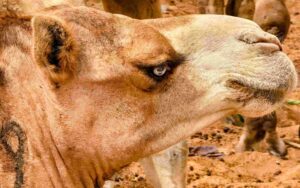
Skip the Sahara for a different kind of desert market! Mauritania boasts the second-biggest camel market in Africa (Sudan takes the top spot). Just outside the capital, Nouakchott, the city fades into dusty plains where thousands of camels gather. Imagine a sea of gnarled branch pens teeming with these fascinating creatures. Some rest languidly, others jostle for position, while a few simply watch the world go by – a truly unforgettable scene.
A Strange Fact – Leblouh – A Harmful Tradition
Leblouh is a disturbing practice where young girls, as young as five years old, are force-fed to become overweight. This tradition was based on the idea that a larger body size made women more attractive for marriage, especially in wealthier families. Leblouh is most common in rural areas of Mauritania and has roots in Tuareg culture.
The practice isn’t limited to Mauritania. It has been reported in other African countries like Niger, Uganda, Sudan, and even Tunisia’s Jewish community. Records show leblouh has been around since at least the 11th century. Sadly, there have been reports of a resurgence in Mauritania after a military takeover in 2008. Thankfully, younger generations in Mauritania increasingly view leblouh negatively and recognize the harm it can cause.
Logistics
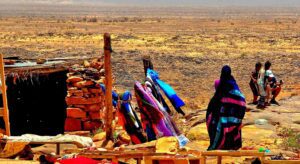
There is not a lot of information out there about travel through this country. Read on to find all the specifics about traveling to and through Mauritania’s best hidden gems.
Safety
There was never a moment where we did not feel safe in this country. The people of Mauritania where welcoming and helpful. However, prior to embarking on this type of adventure, it is crucial to be aware of the potential risks.
When we visited and at the time of writing, all travel advisories (Canada, USA, Australia, etc.,) where at the high level of Avoid or Reconsider All Travel. This is due to the potential risk of terrorism and kidnapping in this country. We were aware of this and made a conscious decision based on the information that we had from our guide, trusted news channels and our tolerance for risk.
I mean hey, we have visited the DRC, Burkina Faso, Central African Republic of the Congo, Afghanistan, Myanmar, Sudan, South Sudan and some other risky places. All of these quests were based on deep research, conversations with people on the ground balanced with our sense for adventure.
Ultimately, the decision to travel here (or to any other potentially risky travel destination) rests with you and your personal tolerance for risk.
CURRENCY
This country uses the Ouguiya. At time of writing, the $1 USD was worth approximately 40 Ouguiya.
TOURIST VISA
Citizens of most western countries require a visa on arrival. One can be purchased on arrival for 55 Euros. The process is quite painless and quick.
CONNECTIVITY: SIM/ESIM CARDS
SIM cards can be purchased in many places in the capital. Furthermore, we highly recommend that you make the purchase with your guide, as we were being charged double the price of what the guide was able to purchase for us.
The SIM card that we recommend is from Moov Mauritel, as it has pretty good coverage throughout the country. To purchase a SIM card with 2 GB of data was $15.40 USD. However, additional GB of data were only $1.40 and could be purchased in most small shops all over the country as a top up.
Mauritania GUIDE/DRIVER

There are a number of guides and organizations that successfully operate in this country. However, we can highly recommend Hademine the owner and operator of Time4Mauritania. Hademine and his team made our trip unforgettable, safe and at a good price.
Hademine can be reached on What’s App: +222 48 17 55 53
Wrap up
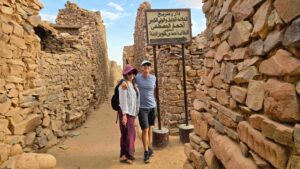
Mauritania was an interesting country for us. We still do not understand the reasons behind the Reconsider Travel Warnings from all major governments. During our stay we felt very safe here. This may not be the most exciting destination, but our guides made the experience special and memorable.
Terjit’s Oasis was our favorite destination here. However, Ouadane and Chinguetti were equally fascinating yet from a historical perspective. We chose not to ride the Iron Ore Train, however many of our friends enjoyed the experience.
Have you been to this desert country or any of the other Saharan destinations? We would love to hear from you in the comments.

